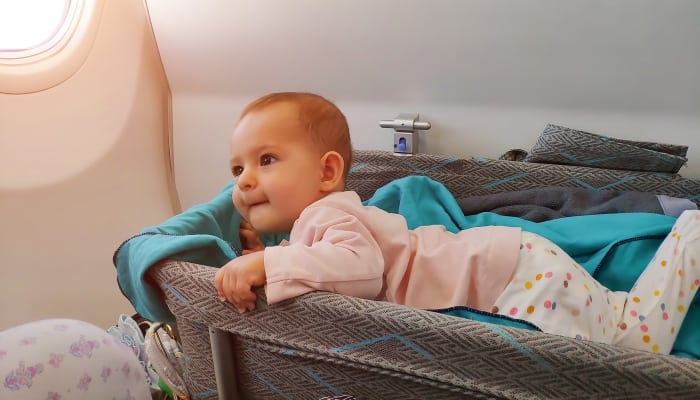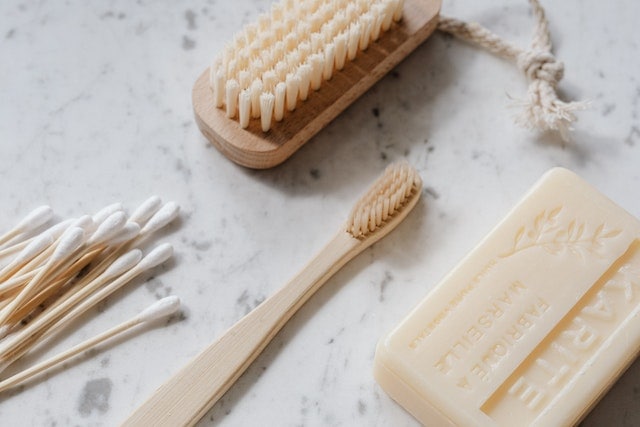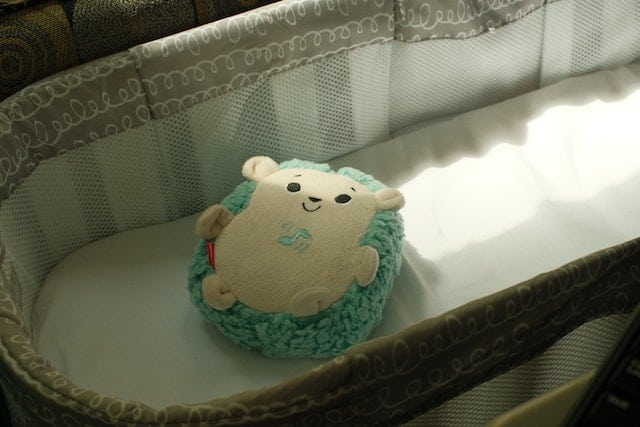Cleaning a bassinet is an essential task that every parent or caregiver should know. A bassinet is where your baby spends most of their time, and it is important to keep it clean to prevent the spread of germs and bacteria.
However, cleaning a bassinet can be a daunting task, especially for first-time parents or caregivers who are not familiar with the process.
Understanding the importance of a clean bassinet is crucial in maintaining your baby’s health and safety. A dirty bassinet can harbor harmful bacteria that can cause infections, respiratory problems, and other health issues.
Therefore, it is essential to clean your bassinet regularly to ensure that your baby is safe and healthy. In this article, we will provide you with a step-by-step guide on how to clean a bassinet, including identifying the parts, gathering the necessary supplies, and preparing for the cleaning process.
Key Takeaways
- Regular cleaning of a bassinet is crucial to maintaining a healthy and safe environment for your baby.
- Cleaning a bassinet involves identifying the parts, gathering the necessary supplies, and preparing for the cleaning process.
- A clean bassinet can prevent the spread of germs and bacteria that can cause infections and other health issues.
Understanding the Importance of a Clean Bassinet
A bassinet is a cozy and comfortable place for a newborn baby to sleep. However, it can also be a breeding ground for bacteria and germs if not cleaned properly.
This is why it is essential to understand the importance of a clean bassinet.
Babies have a fragile immune system, which means they are more susceptible to infections and illnesses. Therefore, it is crucial to provide them with a safe environment that is free from harmful germs and bacteria.
A clean bassinet can help reduce the risk of infections and ensure that your baby stays healthy.
Using an old bassinet can also pose a risk to your baby’s health. Old bassinets may have accumulated dust, dirt, and bacteria over time, making them unsuitable for use.
It is recommended to use a new bassinet or thoroughly clean and sanitize an old one before using it.
Cleaning a bassinet is a simple process that can be done regularly to ensure that it remains hygienic. It is recommended to clean the bassinet every week or whenever it becomes soiled.
The following are some tips for cleaning a bassinet:
- Remove all bedding and wash it in hot water.
- Use a mild detergent and warm water to clean the bassinet frame, mattress, and any other surfaces.
- Wipe down the bassinet with a disinfectant to kill any remaining bacteria or germs.
- Allow the bassinet to air dry before putting it back together.
In conclusion, understanding the importance of a clean bassinet is crucial for ensuring your baby’s health and safety. Regular cleaning and sanitizing of the bassinet can help reduce the risk of infections and create a safe sleeping environment for your baby.
Review: Best Bassinet With Wheels
Identifying the Parts of a Bassinet
Before diving into the process of cleaning a bassinet, it is important to first identify all the parts that make up a bassinet. Knowing the different components of a bassinet can help make the cleaning process more efficient and effective.
A typical bassinet consists of a frame, hood, mattress, linens, bedding, fitted sheet, mattress cover, padding, and zippers. The frame is the main structure of the bassinet that holds all the other parts together.
The hood is the canopy-like cover that provides shade and protection for the baby. The mattress is the soft surface on which the baby sleeps.
Linens and bedding are used to cover the mattress and provide additional comfort for the baby. A fitted sheet is a sheet that fits snugly around the mattress, while a mattress cover is a protective cover that goes over the mattress to prevent it from getting dirty or wet.
Padding is the cushioning material that lines the inside of the bassinet, providing extra comfort and support for the baby. Zippers are used to attach and detach different parts of the bassinet, such as the hood and the padding.
By familiarizing oneself with the different parts of a bassinet, one can easily identify which parts need to be cleaned and how to clean them properly.
It is important to note that different bassinets may have slightly different components, so it is always best to consult the manufacturer’s instructions for specific details.
Gathering the Necessary Supplies
Before beginning to clean a bassinet, it is important to gather all the necessary supplies. This will ensure that the cleaning process is efficient and effective.
Here are some essential supplies that one should gather before starting the cleaning process:
Cleaning Supplies
Cleaning supplies are the most important items required for cleaning a bassinet. These include a spray bottle, sponge, clean towel, laundry detergent, mild detergent, baby detergent, disinfectant, vinegar, baking soda, cloths, and dusters.
It is important to use a mild cleaning solution that is hypoallergenic and baby-friendly.
Waterproof Fabric
Bassinets are made of different materials, and some are waterproof. It is important to use a cleaning agent that is suitable for waterproof fabrics. This will ensure that the fabric is not damaged during the cleaning process.
Hair Dryer
A hair dryer is an essential tool that can be used to dry the bassinet after cleaning. It is important to use a hair dryer on the lowest setting to avoid damaging the fabric.
Vacuum Cleaner
A vacuum cleaner can be used to remove any dirt, dust, or debris that may be on the bassinet. It is important to use a soft brush attachment to avoid damaging the fabric.
Burp Cloth
A burp cloth can be used to wipe down the bassinet after cleaning. It is important to use a clean burp cloth to avoid transferring any bacteria or germs to the bassinet.
In conclusion, gathering the necessary supplies is the first step in cleaning a bassinet. It is important to use the right cleaning supplies and tools to ensure that the bassinet is cleaned properly.
Preparing for the Cleaning Process
Before beginning the cleaning process, it is important to prepare the bassinet properly. This will help ensure that the cleaning process is efficient and effective.
First, read the manufacturer’s instructions carefully to ensure that you understand how to disassemble and reassemble the bassinet. Make sure you have all the necessary tools and equipment before beginning the cleaning process.
Next, disassemble the bassinet as much as possible. Remove all bedding, mattress, and any other removable parts. This will make it easier to clean all parts of the bassinet thoroughly.
Once the bassinet is disassembled, prepare a cleaning solution. It is recommended to use a mild soap or detergent and warm water. Avoid using harsh chemicals or bleach as they can damage the bassinet and be harmful to your baby.
Before cleaning, test the solution on a small, inconspicuous area of the bassinet to ensure that it does not cause any damage or discoloration.
Once you are ready to clean, use a soft cloth or sponge to gently scrub all parts of the bassinet. Pay special attention to areas where dirt and grime may have accumulated, such as corners and crevices.
After cleaning, rinse all parts of the bassinet thoroughly with clean water and allow them to air dry completely before reassembling.
By following these steps, you can effectively clean your bassinet and ensure that it is safe and hygienic for your baby.
Cleaning the Bassinet Frame
The bassinet frame is an essential part of the bassinet that requires regular cleaning. It is the foundation on which the bassinet rests and is responsible for providing support to the bassinet and the baby.
Here are a few tips for cleaning the bassinet frame:
Materials Needed
- Warm water
- Soft cloth or sponge
- Mild soap or baby detergent
- Disinfectant spray or wipes
- Vacuum cleaner with a brush attachment
- Cotton swabs
- Rubbing alcohol (optional)
Steps to Clean the Bassinet Frame
- First, remove the mattress and any other bedding from the bassinet. This will give you access to the frame and make it easier to clean.
- Using a soft cloth or sponge, wipe down the frame with warm water and mild soap or baby detergent. Make sure to remove any dirt, dust, or debris that may have accumulated on the frame.
- For a deep clean, use a disinfectant spray or wipes to sanitize the frame. This will help to eliminate any bacteria or allergens that may be present on the surface.
- If the bassinet frame is made of wood, be careful not to use too much water as it can damage the wood. Instead, use a damp cloth to wipe down the frame and dry it immediately with a dry cloth.
- If the bassinet frame is made of metal, check for any signs of rust or corrosion. Use a cotton swab dipped in rubbing alcohol to remove any rust spots or stains.
- For plastic bassinet frames, avoid using harsh chemicals or abrasive cleaners that can scratch the surface. Instead, use a soft cloth or sponge with warm water and mild soap to clean the frame.
- To remove any dust or debris that may have accumulated in hard-to-reach areas, use a vacuum cleaner with a brush attachment. This will help to clean the frame thoroughly and remove any allergens that may be present.
By following these simple steps, you can keep your bassinet frame clean and free of dirt, dust, and allergens. Regular cleaning and spot treatment can help to extend the life of your bassinet and keep your baby safe and comfortable.
Washing the Bassinet Bedding and Linens
To keep the bassinet clean and hygienic, it is essential to wash the bedding and linens regularly. The bedding includes the mattress cover, fitted sheet, and any additional lining or fabric used to make the bassinet comfortable for the baby.
Before washing, it is important to check the tag on each item to ensure that it is machine washable. If the tag indicates that the item should be hand-washed, follow the instructions carefully to avoid damaging the fabric.
To wash the bedding and linens, start by removing any loose dirt or debris from the surface. Then, place the items in the washing machine with a mild laundry detergent.
Use the delicate cycle to avoid damaging the fabric, and add an extra rinse cycle to ensure that all detergent is removed.
For waterproof mattresses, wipe down the surface with a damp cloth and mild soap. Avoid using harsh chemicals or abrasive sponges, as they can damage the waterproof layer.
Once the bedding and linens are clean, dry them on a low heat setting in the dryer or hang them outside to air dry. Avoid using high heat, as it can damage the fabric and cause shrinkage.
In summary, washing the bassinet bedding and linens is an important step in maintaining a clean and hygienic sleeping environment for the baby.
Always follow the instructions on the tag, use a mild laundry detergent, and avoid high heat to ensure that the fabric stays in good condition.
Disinfecting the Bassinet
Disinfecting the bassinet is an essential step in keeping your baby safe from harmful germs.
Here are some steps to follow to disinfect your bassinet properly:
- First, remove all bedding and wash it in hot water. Use a detergent that is safe for babies and avoid using fabric softeners or dryer sheets.
- Next, use warm water and mild soap to wipe down the bassinet. Make sure to get into all the nooks and crannies, including the mattress and any toys or attachments.
- Once the bassinet is clean, you can disinfect it using a disinfectant spray or wipe. Look for a product that is safe for use on baby items and follow the instructions carefully.
- If you prefer a more natural approach, you can use a solution of equal parts water and white vinegar to disinfect the bassinet. Simply spray the solution onto the bassinet and let it sit for a few minutes before wiping it clean.
- Finally, let the bassinet air dry completely before putting it back together and using it again.
It is important to disinfect the bassinet regularly, especially if your baby has been sick or if the bassinet has been exposed to any germs. By following these simple steps, you can help keep your baby safe and healthy.
Drying and Reassembling the Bassinet
Once the bassinet has been thoroughly cleaned, it’s time to dry it and reassemble it.
First, use a clean towel to wipe down any excess water or cleaning solution from the bassinet. Make sure to get into all the crevices and corners to ensure that the bassinet is completely dry.
Next, allow the bassinet to air dry completely. This may take several hours, depending on the humidity and temperature of the room. It’s important to make sure the bassinet is completely dry before reassembling it to prevent any mold or mildew from forming.
Once the bassinet is dry, it’s time to reassemble it. Follow the manufacturer’s instructions carefully to ensure that all parts are properly attached and secure.
Make sure to check that all screws and bolts are tightened and that the bassinet is stable before placing your baby in it.
In summary, drying and reassembling the bassinet is an important step in keeping your baby’s sleeping environment clean and safe. By following the proper steps and guidelines, you can ensure that your baby’s bassinet is ready for use once again.
Maintaining a Regular Cleaning Routine
To ensure that your baby’s bassinet is always clean and hygienic, it’s important to establish a regular cleaning routine. This will not only help keep your baby safe from germs and bacteria but also prolong the life of the bassinet.
Here are some tips on how to maintain a regular cleaning routine for your baby’s bassinet:
1. Clean the Bassinet After Every Use
After every use, remove the bedding and any other accessories from the bassinet. Use a damp cloth or sponge to wipe down the surface of the bassinet, paying close attention to any areas that may have come into contact with bodily fluids.
2. Wash the Bedding Regularly
The bedding in the bassinet should be washed regularly to prevent the buildup of dirt, dust, and bacteria. Use a gentle detergent and warm water to wash the bedding, and make sure to dry it thoroughly before putting it back on the bassinet.
3. Disinfect the Bassinet Weekly
Once a week, it’s important to disinfect the bassinet to kill any germs or bacteria that may be present. Use a disinfectant spray or wipes to clean the surface of the bassinet, and make sure to let it dry completely before putting the bedding back on.
4. Check for Wear and Tear
Regularly inspect the bassinet for signs of wear and tear, such as loose screws or broken parts. If you notice any damage, stop using the bassinet immediately and contact the manufacturer for repairs or replacement.
By following these simple tips, you can maintain a clean and hygienic bassinet for your baby. A regular cleaning routine will not only keep your baby safe but also ensure that the bassinet lasts for years to come.
Also, read some related posts:
Frequently Asked Questions
How do I clean my Ingenuity bassinet?
To clean an Ingenuity bassinet, first, remove the mattress and sheets. Then, wipe down the frame and any plastic parts with a damp cloth and mild soap.
Let the parts dry completely before reassembling the bassinet. The mattress and sheets can be washed according to their care instructions.
How can I clean my Halo Swivel bassinet?
To clean a Halo Swivel bassinet, first, remove the mattress and sheets. Then, wipe down the frame and any plastic parts with a damp cloth and mild soap.
Let the parts dry completely before reassembling the bassinet. The mattress and sheets can be washed according to their care instructions.
What’s the best way to steam clean a bassinet?
To steam clean a bassinet, first, remove any removable parts and wash them according to their care instructions. Then, use a handheld steamer to steam the frame and any remaining parts.
Be sure to follow the steamer’s instructions and let the parts dry completely before reassembling the bassinet.
What are the cleaning instructions for the Koola Baby bassinet?
To clean a Koola Baby bassinet, first, remove the mattress and sheets. Then, wipe down the frame and any plastic parts with a damp cloth and mild soap.
Let the parts dry completely before reassembling the bassinet. The mattress and sheets can be washed according to their care instructions.
How do I clean my Baby Trend bassinet?
To clean a Baby Trend bassinet, first, remove the mattress and sheets. Then, wipe down the frame and any plastic parts with a damp cloth and mild soap.
Let the parts dry completely before reassembling the bassinet. The mattress and sheets can be washed according to their care instructions.
How do I properly clean my Baby Delight bassinet?
To clean a Baby Delight bassinet, first, remove the mattress and sheets. Then, wipe down the frame and any plastic parts with a damp cloth and mild soap.
Let the parts dry completely before reassembling the bassinet. The mattress and sheets can be washed according to their care instructions.

Iesha is a loving mother of 2 beautiful children. She’s an active parent who enjoys indoor and outdoor adventures with her family. Her mission is to share practical and realistic parenting advice to help the parenting community becoming stronger.



